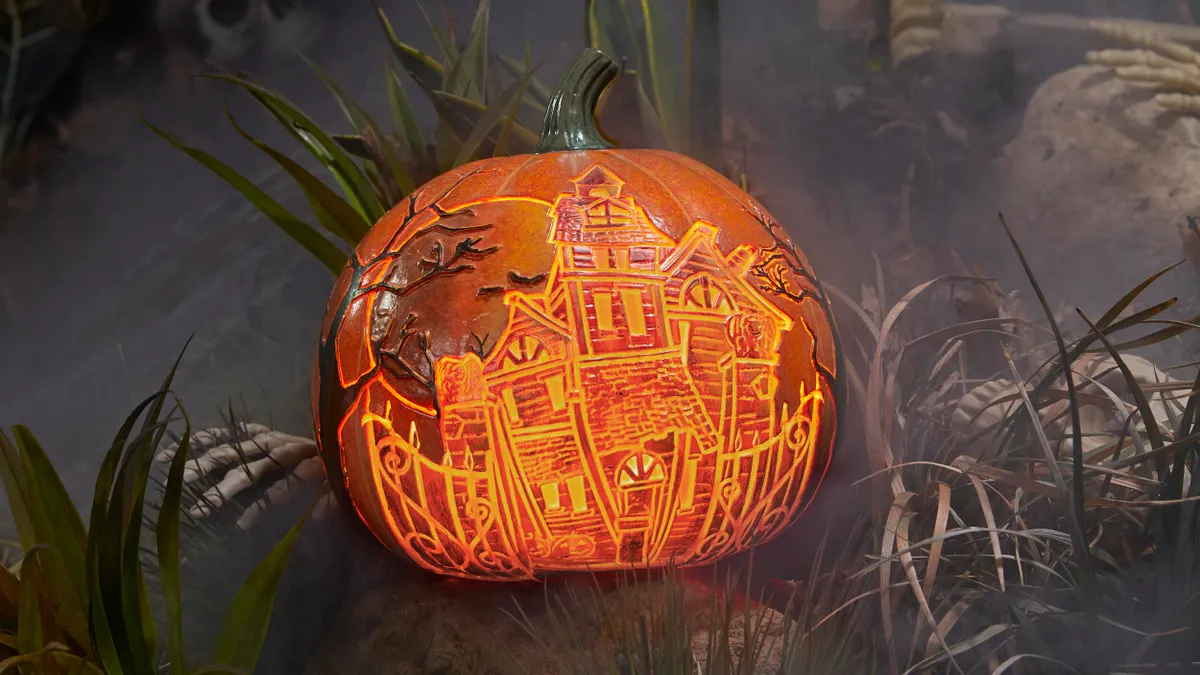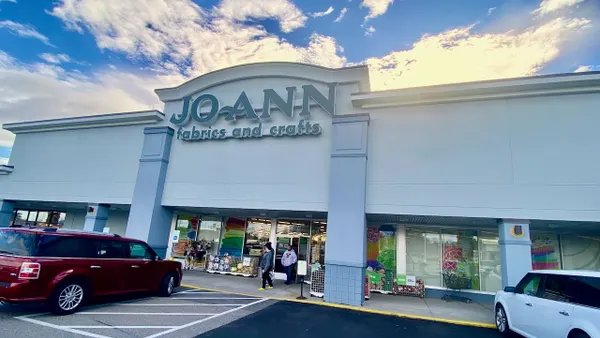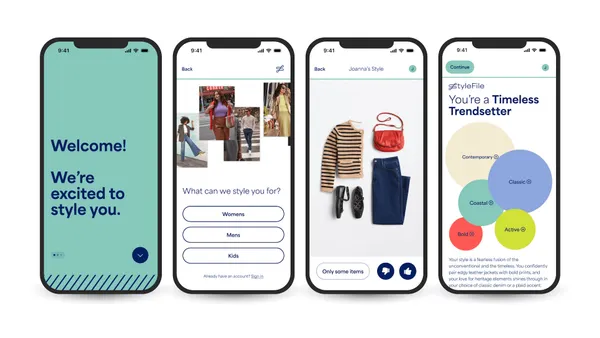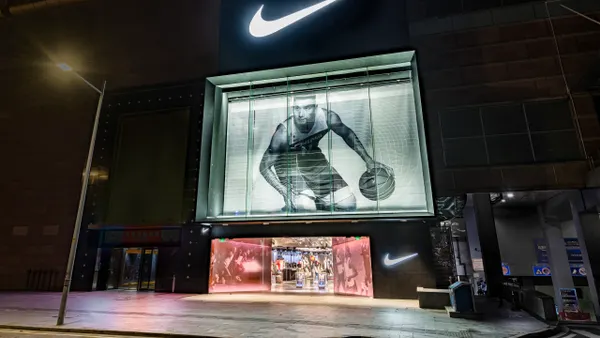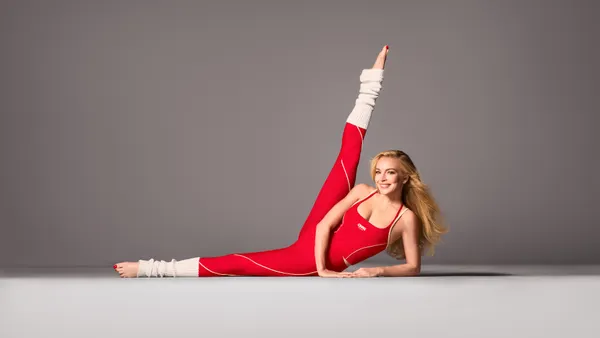Halloween is big business.
Spirit Halloween, for example, has grown into such an annual retail phenomenon that it recently received the ultimate pop culture high-five: a sketch on “Saturday Night Live.”
“We don’t see a dead end town. We don’t see an abandoned Kmart. We see a spirit, a Spirit Halloween,” the fake SNL ad states.
While the sketch may be tongue-in-cheek, it hits on a larger truth regarding the temporary real estate presence of the holiday company, which dubs itself the “nation’s largest Halloween retailer.” This year, Spirit Halloween opened a record 1,525 locations and started hiring for those stores in June. The company even partnered with Uber to deliver costumes to last-minute shoppers.
Yet, the fall holiday is not relegated to seasonal retailers. Target, Walmart, Amazon, home improvement stores and others are taking advantage of a time when consumers are ready to celebrate — and spend money.
Halloween has “proven to be a resilient investment for both retailers and consumers, even amid economic uncertainty,” according to the Advantage Outlook survey of Halloween shoppers and insights from Advantage Unified Commerce.
A big reason why Halloween has gained so much enthusiasm from both retailers and shoppers alike may simply come down to this: it’s fun.
“This time of the year you can go straight from having fall decorations out into your holiday decorations. It’s just something that people really enjoy,” said Katie Thomas, who leads the Kearney Consumer Institute at Kearney.
Here for the boos
If it feels like ghosts and goblins are making an early appearance in stores, that’s because they are.
In the nearly 20 years the National Retail Federation has been tracking the season, Halloween spending is up over 250%. Furthermore, it was projected to hit a record $12.2 billion last year. This year’s forecast is down slightly from that high, with an estimated $11.6 billion in spend.
Halloween spending has steadily increased over nearly 20 years
The rise in popularity of creepy season might be because it’s the first big holiday after July 4. Yet, it may be better to look at what is going on with holidays overall to explain consumer behavior, according to Karthik Easwar, teaching professor of marketing at Georgetown University.
“I feel that every holiday is seeing a growth in the spend and in terms of the amount that people decorate and have themed activities,” Easwar said.
Part of the increased popularity in Halloween may be a reaction from the pandemic. At the height of the global health crisis, consumers were going through extreme isolation. And some of that has continued. “So much more of our life has become isolated. We work from home, we order food straight into our home, and then we watch streaming at home, and you don’t necessarily go out and about as much,” Easwar said.
The holidays “are ways to have a reason to bring people together. It’s a reason to talk to people, it’s a reason to do something, it’s a reason to go out,” he said. “You need these motivators to say, ‘Oh, it’s Halloween, let’s go out.’”
Thomas also points to the pandemic to explain the expanding holiday season. “For all the analysis we did on what behaviors would be sticky post pandemic, I think one of the stickiest is longer holiday seasons,” Thomas said.
Why? Because it plays on a sense of nostalgia, community and feelings of comfort. It also might be a “welcome distraction,” especially in an election year.
“We’ve just seen people kind of embrace it and feel like, ‘If I’m going to make this investment in this decor, why not bring it out a bit earlier?’” she said.
Spooky season (and the 2024 emphasis on value)
For home improvement retailers specifically, Halloween is a boon. The segment traditionally sees the height of product spending in the spring. However, in recent years these retailers have capitalized on autumnal products, resulting in boosted revenues and an increase in store traffic in the fall.
Home Depot in particular was at one point the center of the Halloween craze. At the height of the pandemic, the company introduced a $299 12-foot skeleton, Skelly, which sold out and became a viral hit.
And while Home Depot may have accelerated the importance of Halloween decor in the zeitgeist, this year it is pushing something that has increasingly become important in an era of inflation: value. Home Depot is emphasizing value by showing seasonal products at different price points and stating that, even after five seasons, Skelly’s price remains the same.
“Year after year, we have excelled in quality while maintaining affordable prices to maximize the customer's dollar,” Lance Allen, Home Depot’s senior merchant of decorative holiday, said in a statement.
Target in September announced that it was “creeping it real” with an expanded seasonal offering: costumes start at $15, value packs of candy from $9.99 and trick-or-treat buckets start at $1. Additionally, 60% of the retailer’s Halloween decor this year is $10 or under.
Craft retailer Joann is currently featuring sales on its Halloween assortments — and for a limited time is offering $5 off purchases when customers come to stores dressed up in costume. “We know this is an important time of year for our customers to host, celebrate, and make to give to others, and we are focused on helping them find great deals this season,” Chris DiTullio, Joann’s chief customer officer, said in a statement.
And while a portion of consumer spending will be on costumes and decorations, nearly all Americans (94%) celebrate by sharing chocolate and candy with family and friends, according to the National Confectioners Association. Last year, Halloween was responsible for $6.4 billion in confectionery retail sales, and that number is expected to grow between 3% and 5% this year.
Yet, even candy can’t escape price increases. This season shoppers can expect to pay more for chocolate, as cocoa prices have doubled since the start of the year. Companies aren’t able to keep up with the growing demand for chocolate without raising prices, according to sister publication Food Dive.
In response, shoppers may redirect funds from experiences or decor to cover Halloween “necessities” like candy and costumes, according to the Advantage Outlook survey. Many consumers will hold off on candy purchases in the hope they will score a deal, with 70% of shoppers buying candy within one week of Oct. 31.
Summerween reigns (for now)
Halloween is trending earlier than ever in part due to the trend of Summerween. The origin of celebrating Halloween during the summer months has a surprising source: Disney. It was first mentioned in the short-lived animated Disney TV show, “Gravity Falls” where residents of the fictional Oregon town love Halloween so much they celebrate it twice a year. On the show, it is celebrated on June 22, but for many, it’s more of a mid-summer vibe rather than a specific day.
The holiday has transcended the realm of a cartoon and has had enough of an impact that retailers are getting into the action. It’s especially resonating with millennial and Gen Z shoppers, according to Walmart Data Ventures. One-third of Walmart customers said they are likely to buy Halloween-related products between June and August, according to the retailer’s data, and many of those purchases are based on impulse.
“Even though Halloween has always been an important holiday for Michaels and our customers, we’ve seen interest and demand in Halloween continue to grow and evolve into new trends and traditions over recent years,” Melissa Mills, senior vice president and general merchandise manager at Michaels, said in emailed comments. “Summerween is a great example of how celebrations are evolving.”
Michaels has seen customers start prepping for Halloween and decorating as early as Independence Day, and the company over the years has shifted the timing of its assortment for the holiday to earlier in the summer. The craft retailer introduced its first Halloween collection, Hippie Hallow, in late June, which “generated tremendous excitement,” according to Mills, and beat internal expectations week after week, ultimately seeing a 310% increase in sales from its comparable program last year.
“We see the Summerween customer as a specific subset of the overall Halloween customer,” Mills said, noting that those shoppers are more interested in unique and colorful decor that transitions from summer to fall.
Some of that early spend may be because in October, retailers are already prepping for Christmas. “Senior retailers bring out decorations a lot earlier than they used to,” Kearney’s Thomas said. “I can tell you last year I went looking for something specific in mid-October and they were all out. So you sort of have to get in there early, and buy early whether you’re ready or not.”
Thomas pointed to big-box retailers embracing an early season as well as specialty retailers including Pottery Barn, Williams Sonoma and Crate and Barrel.
Joann celebrated Summerween this year. The craft retailer’s buyers added to its variety and volume of Halloween products and pulled inventory to be available early. The company created a “one stop scare shop” with new decor arriving in stores weekly.
“We’ve seen over the past couple of years that customers – particularly a younger demographic – are shopping for Halloween much earlier than in years past,” Rob Will, Joann’s chief merchandising officer, said in a statement. The early start of the Halloween season marks a “large shift in consumer behavior” and, in turn, the craft retailer will introduce its winter holiday assortment earlier based on consumer demand.
But, is Summerween here to stay? Experts aren’t so sure.
“I think we all go through that zone of…starting to almost miss the holiday season, miss the fall and wanting to pull it up a little bit,” Thomas said, adding that it feels like a commercial experiment of sorts. “Maybe you’re hot, you’re sick of summer and it’s a nice little reminder of the fall. But I don’t think it will scale into anything really big.”
Easwar agrees. “It might have a moment,” he said, regarding Summerween. “It might have a couple of years with a moment. But, my guess is that it won’t be a lasting holiday. It’s more likely that Halloween gets a longer window.”
Is the future of Halloween…..Christmas?
With so much energy — and money — surrounding Halloween, does the future of the holiday include permanent Halloween stores? Because there are, of course, Christmas retailers that are open all year.
Probably not, says Easwar, stating that Christmas is the one holiday that has been able to sustain a year-round retail presence.
“I’m not sure that the desire to decorate spooky is something that people might want 12 months of the year,” he said. “I think part of what Christmas means for everyone, religious or not, is that it’s cozy and it’s family, and those are things that we want in June and July and in December and January.”
Spirit Halloween may be thinking along those same lines. The company recently said it is opening 10 Spirit Christmas pop-up locations in the Northeast this fall as a test.
“Spirit Christmas is a new concept for us, and we’re hopeful it will resonate with our customers. Our goal is to create a festive retail experience that captures the spirit of the season, much like we do for Halloween,” a Spirit Halloween spokesperson said in an email to Retail Dive.
“I don't know that people want creepy all the time,” Easwar said. “I would love to spend a nice Saturday sitting on the couch with my friends and family watching movies in July and in December. So I think that's part of why Christmas has been able to expand itself outside of the Christmas season, or even the winter, because underlying the winter is this idea of cozy togetherness that we want 12 months of the year.”



